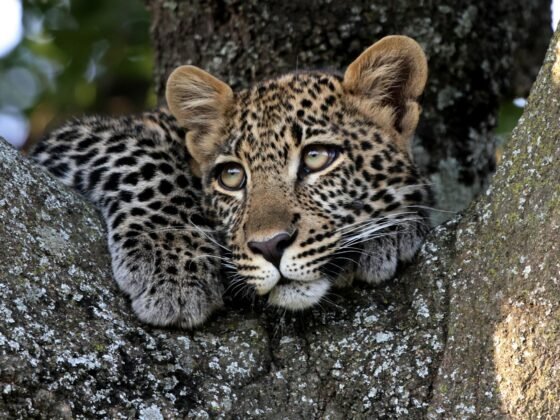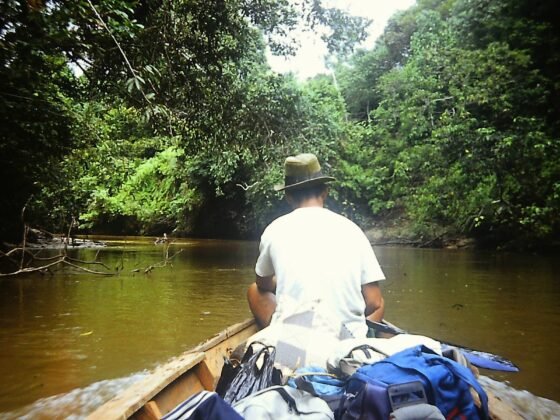
Have you ever dreamt of gliding through powdery white snow, leaving behind your graceful mark on the mountainside? At Brundage Mountain Resort in Idaho, we believe everyone should have the chance to experience the exhilarating joy of skiing. Whether you’ve never stepped foot on a ski slope or have minimal experience and need a refresher course, this beginner’s guide is tailored for you. Offering simple tips, easy-to-understand lessons, and pointers from the pros, we set you up for success on your snow-filled adventure. So strap in, and get ready to discover a winter sport that can truly become an enduring passion.
Beginner’s Guide to Learning to Ski
Skiing is a popular winter sport that can be enjoyed by all ages and skill levels. However, if you are new to the sport, it can seem intimidating at first. With the right gear, lessons, and practice, learning how to ski is an achievable goal. In this guide, we will go through the basic tips and lessons you need to get started on your new sport of skiing.Learning how to ski is an achievable goal with the right gear, lessons, and practice.
The Basics You Need to Get Started
Before you hit the slopes, there are a few essential components that you’ll need for skiing. The most important piece of gear is, of course, a pair of skis. Your local ski shop or rental facility should have a knowledgeable staff member who can help you with sizing and selection. They will take into account your skill level and what type of terrain you will be skiing on.
You will also need ski boots that fit snugly but not too tight, as well as poles that match your height and experience level. Dressing in layers is recommended so that you can easily adjust your clothing based on the temperature and intensity of your activity. Protective gear such as a helmet and goggles should also be worn for safety.
Now that you have all the necessary gear let’s move on to the basics techniques of skiing:
The first thing any beginner needs to do is learn how to properly put skis on and off their feet because doing so incorrectly can lead to injuries. Once they’re on correctly make sure they’re pointed straight ahead to avoid unwanted movements.
To move forward in skis, place them in a V shape known as “the wedge” or “snow plow”. This technique involves pointing the tips of your skis together until they form a triangular shape while simultaneously pushing away from each other with your toes.
Once comfortable with “the wedge”, try using the edges for braking turning, and stability. This is called “edging”, and involves tilting the skis on their side, away from the slope as you turn or slowing down.
It is essential to take ski lessons from a professional instructor who understands your learning style, and pace and can provide personalized feedback. Ski instructors also have knowledge about selecting terrain suitable to one’s skill level.
Lastly, practice makes perfect when it comes to skiing. It’s essential to get comfortable with the basic techniques before moving on to more advanced ones. Do not get disappointed if things feel awkward or slow at first. With time and dedication, you will be able to progress.
Selecting the Right Ski Gear
Skiing is a fun, adrenaline-packed sport that requires appropriate gear for safety and success. Therefore, selecting the right ski gear is crucial to beginners. Here’s what to consider when selecting your ski gear:
- According to the National Ski Areas Association, nearly 2.6 million new skiers and snowboarders took lessons at U.S. resorts during the 2019/20 winter season.
- A study published in the Journal of Sports Sciences estimated that skiing students could cover around 17-22 miles (27-35 kilometers) in a full day’s skiing lesson to improve their skills.
- The International Ski Instructors Association reports that an average adult beginner takes between 6 and 12 one-hour lessons to be able to make controlled stops and turns on beginner slopes.
Choosing the Right Skis and Boots
Choosing skis and boots for skiing requires careful consideration of your skill level and personal preferences. Ski shops usually offer two types of skis: easy-to-turn shaped skis or longer, straighter models that require more effort to turn. Shaped skis are easier to turn, making them an excellent option for beginner ski enthusiasts.
Next, select a boot suitable for the type of skiing you plan on doing. The most important aspect of ski boots is fit, which should be snug but not painful. Note that proper fitting boots will provide better control on the slopes.
Suppose you’re unsure about which size or model to choose from. In that case, you can try out several options before settling on one – many resorts offer rental equipment at affordable prices.
Finally, don’t forget to wear helmets and goggles to protect your head and eyes.
As crucial as choosing the right skis and boots is, there’s still much more to learn about skiing for beginners, such as how to optimize basic skills like balance and speed control. Check out our other articles where we dive into tips and lessons necessary to become an accomplished beginner skier.
Embarking on Your First Ski Trip
Before heading out on your first ski trip, planning is key. Some factors to consider include:
- Choosing the right location: Opt for beginner-friendly resorts with gentle terrains and slopes.
- Weather: Check the weather forecast before setting out to ensure appropriate clothing.
- Equipment Rental: Book well in advance to secure essential gear like skis, boots, helmets, goggles, and poles.
- Lessons: Enroll in ski lessons (even if it’s only a few hours) to learn the basics or get a refresher course if you’re returning after some time away.
- Suitable Clothing: Layer up – wear moisture-wicking thermal layers beneath waterproof ski jackets and pants. Choose accessories like gloves that provide both warmth and flexibility.
It’s also important to know that ski school programs vary between destinations and terrain type so always research your chosen resort’s beginner programs to maximize your overall experience.
Don’t forget that rest is as critical to skill development as practicing – you don’t want to be exhausted within the first hour. And remember, it’s a learning process that takes time and patience. Allow yourself to make mistakes, learn from them, and enjoy the experience.
Get ready to hit those slopes! After all, skiing is a unique blend of adrenaline-pumping adventure and scenic escapades in the great outdoors. Take these tips with you as you embark on your ski adventure.
Preparing for the Mountain Resorts
Before hitting the slopes, preparation is key. To maximize your ski experience, take the time to research the mountain resort in advance. Consider what type of terrain it offers – beginner-friendly, intermediate, or advanced slopes?
For instance, if you’re a beginner, bunny slopes and green runs are ideal to start with. Some resorts may have different shades of blue runs which are slightly more challenging. For advanced skiers, most mountain resorts have challenging black and double black diamond trails.
Another aspect to consider is equipment. While some resorts offer rental services for ski gear and attire, bringing along personal items can be less costly. It’s also essential to ensure you dress warmly and comfortably to prevent frostbite, hypothermia or other cold-related injuries.
Finally, consider your physical fitness level when heading out for a day on the mountain. Skiing is a strenuous activity that demands endurance and leg strength. Be sure to stretch before hitting the snow and adequately hydrate yourself throughout the day.
Advancing Your Skiing Skills
Once comfortable with bunny slopes and familiarized with basic skills like stopping, turning and twisting, it’s time to progress to tackling varied terrains.
An important skill in skiing is learning how to control your speed while descending steep hills or navigating sharp turns. Mastering this skill involves learning how much pressure to apply on your skis while negotiating these tricky slopes.
Other critical techniques include edging – maintaining a stable balance while changing directions – and balancing your weight between both legs.
To boost these skills further, consider signing up for an intermediate-level lesson at a local ski school or resort near you. Alternatively, watch online tutorials or skiing DVDs from seasoned skiers who break down different techniques step by step.
Additionally, it’s important to keep practicing on tougher terrains progressively as you improve over time. A helpful tip would be to watch experienced skiers on these runs and mimic their movements.
Remember, in skiing, practice perfects the sport. The more you ski and learn new techniques, the more proficient you can become.
Mastering Bunny Slopes and Rough Terrains
As a beginner, the best place to start skiing is on “bunny slopes.” These areas are gently sloping with comfortable inclines that allow novice skiers to put their newly acquired skills into practice. It’s recommended that beginners take lessons from qualified ski instructors who specialize in teaching novices how to ski as they offer guidance on equipment handling, body positioning, and general safety routines.
After racking up some experience on bunny slopes, it’s time to navigate more challenging terrain. Skiing on uneven terrains can be challenging as it requires excellent balancing skills and the ability to navigate sharp turns in confidence. It’s essential to approach such trails with caution and keep within appropriate limits.
Even for intermediate skiers, harsh weather conditions such as blizzards can quickly turn any slope into a difficult challenge. Stay alert and cautious by monitoring weather reports before heading out. Skiers need proper equipment for skiing in rough terrain, particularly sturdy boots with adequate friction grip bindings to ensure maximum stability when turning.
Additionally, experts recommend practicing speed control techniques like snowplow stops or wedge heel braking. This technique entails spreading or wedging your skis apart and placing the majority of weight on the uphill ski while pushing away with the downhill ski until you gradually come to a complete stop.
Keep practicing these techniques until you gain full control of this type of terrain; it’s not a speedy process but well worth your effort.
Learning Advanced Ski Tricks
Once you’re confident tackling harsher terrain types, advanced skiing trickery awaits! These include navigating moguls (small mounds), extreme carving, powder skiing, and even jumping off ramps!
Think of it like taking fast-track courses in skiing; learning tricks may be exciting but requires determination and several attempts before mastery is achieved.
Before attempting any advanced techniques, participants must have a firm grip on basic skiing skills and knowledge of safety measures. Ski instructors come in handy in this regard as they can help participants develop techniques, balance, and even control fear.
One popular trick amongst experts is carving. This technique involves alternate pressure distribution on the edges of each ski to create turns with a curved trajectory. Carving adds an extra level of excitement to your skiing experience and should only be attempted after several hours of practice.
It’s essential to remember that having the best equipment alone will not guarantee systematic improvement or progress. To develop real confidence, you must practice regularly and seek professional guidance when uncertain.
However, some professionals argue against advanced maneuvering and believe that hitting the slopes contently while practicing basic safeguards is enough. They believe skiing should be more about enjoying the picturesque landscapes than showing off your tricks!











